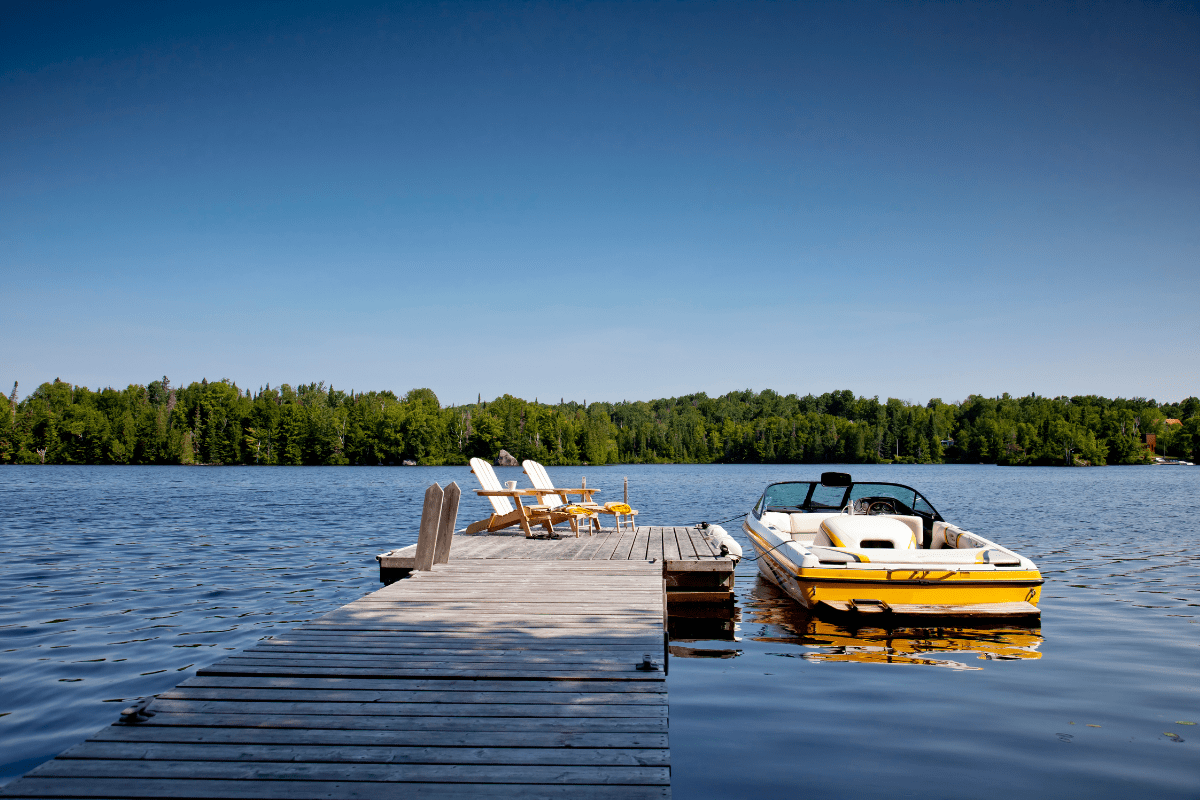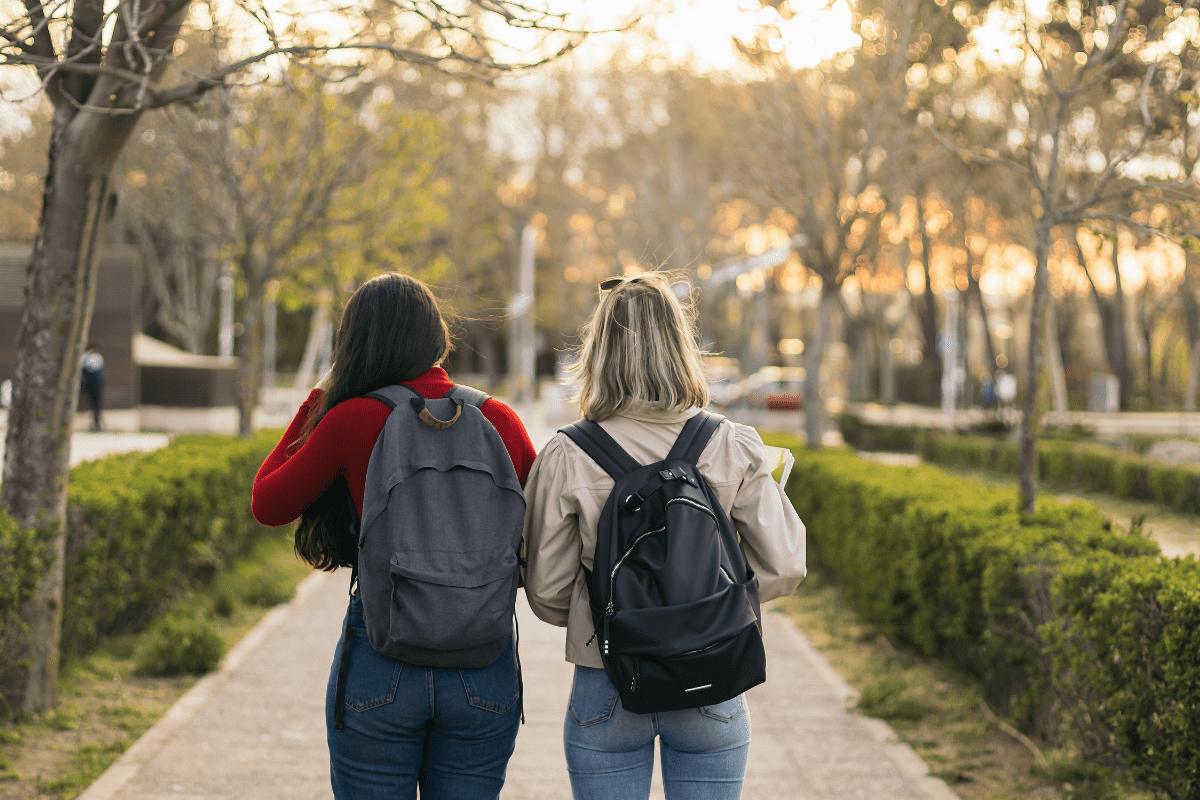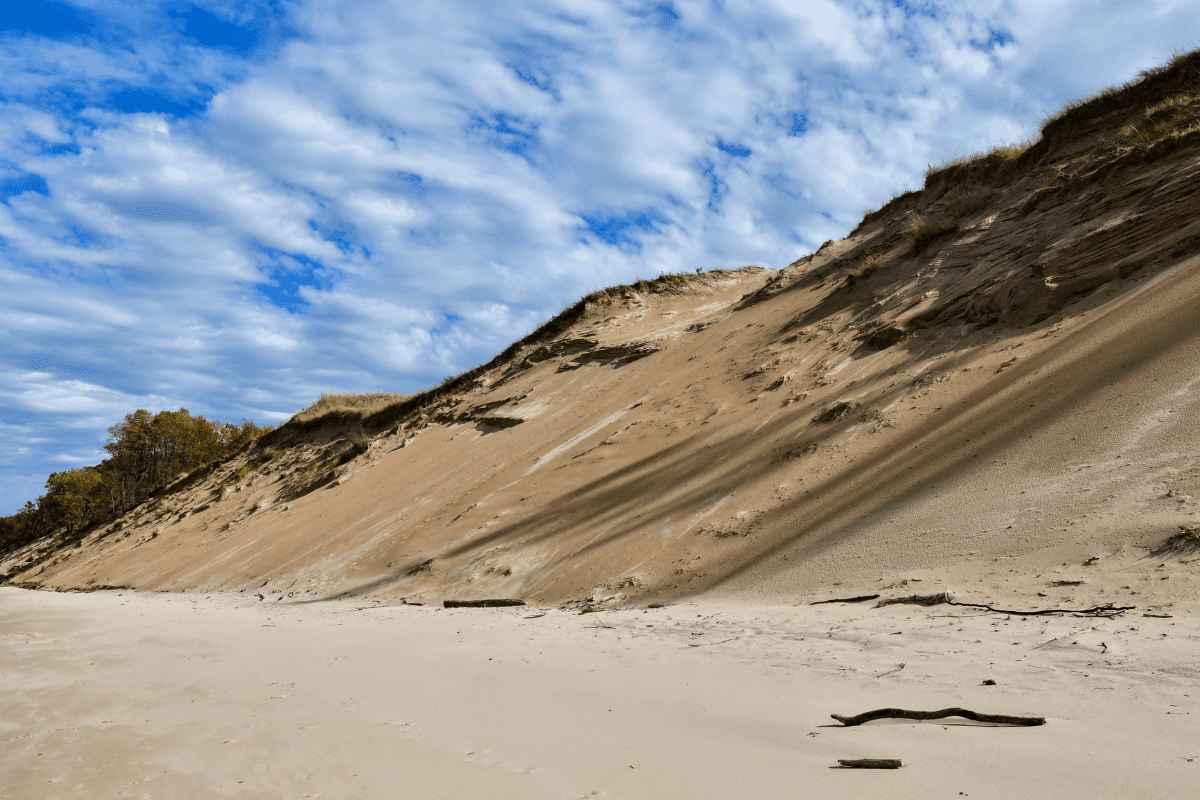Indiana's lakes might not get the Instagram love of coastal destinations, but they're quietly generating over $1.6 billion in tourism revenue while giving millions of Midwesterners a place to catch trophy bass without fighting airport security. With 100,000 acres of publicly accessible water spread across 24 state parks and countless boat launches, the Hoosier State has somehow managed to create a lake for every personality type… even that uncle who insists on bringing his metal detector to the beach.
Understanding Indiana's lake landscape
Before you load up the cooler and argue with your GPS about the fastest route, it helps to understand what you're dealing with. Indiana's lakes fall into two main categories: the glacier-carved natural lakes up north that look like nature's attempt at abstract art, and the engineered reservoirs down south that the Army Corps of Engineers built to keep towns from floating away during spring floods.
The state manages this aquatic empire through 7,701 campsites, 150 cabins that book faster than Taylor Swift tickets, and 17 marinas where you can buy overpriced sunscreen and those little foam floaties for your drink. Whether you're after record-breaking smallmouth bass or just a quiet spot to read a book without your kids finding you, there's probably a lake within an hour's drive.
Monroe Lake: Go big or go home
When it comes to sheer size and variety, Monroe Lake doesn't just lead the pack… it laps it twice and still has energy for water skiing. This massive reservoir southeast of Bloomington has become the go-to destination for serious anglers, weekend warriors, and anyone who thinks bigger automatically means better. With recent record-breaking catches and facilities that rival small cities, Monroe has earned its reputation as Indiana's aquatic playground.
The undisputed heavyweight champion
Let's start with the obvious showoff. Monroe Lake sprawls across 10,750 acres just 10 miles southeast of Bloomington, making it Indiana's largest inland water body. Created between 1960 and 1965 when the Army Corps of Engineers decided Salt Creek needed some discipline, this massive reservoir reaches depths of 54 feet and covers nearly 24,000 total acres when you count all the surrounding land.
The fishing here recently made headlines when someone pulled an 8-pound, 3.6-ounce smallmouth out of the water in 2024, breaking a record that had stood since the disco era. If you're not quite at that skill level (join the club), you can hire Tom's Guide Service, one of only two full-time professional guides on the lake. For $250, Tom will take you to his secret spots where 2-pound crappie apparently just jump into the boat. Well, not quite, but he does report consistent catches from the 200-plus artificial fish structures added between 2018 and 2019.
Facilities that actually work
Monroe doesn't mess around when it comes to amenities. You've got 11 boat launch ramps spread across nine recreation areas, which sounds excessive until you see the Saturday morning boat launch ballet in July. The Fourwinds Lakeside Inn & Marina claims the title of largest inland marina in the country, though I'm not sure who's keeping track of these things.
Three public swimming beaches operate from Memorial Day through Labor Day at Paynetown, Hardin Ridge, and Fairfax State Recreation Areas. The surrounding Charles C. Deam Wilderness Area, Indiana's only federally protected wilderness, offers hiking trails ranging from the leisurely half-mile Paynetown Tree Trek Trail to the more ambitious 1.75-mile Allen's Creek Turkey Trot Trail, which sounds festive but is actually just steep.
Camping runs from $12 for primitive sites where you can pretend you're Bear Grylls, to $30 for electric sites where you can charge your phone to post photos of you pretending to be Bear Grylls. The Fourwinds Lakeside Inn offers 106 rooms plus six deluxe suites if you prefer your nature experience with room service.
Patoka Lake: Where the wild things actually are
If Monroe Lake is the popular kid at the party, Patoka Lake is the interesting one in the corner with stories about seeing freshwater jellyfish and bald eagles on the same afternoon. This southern Indiana gem combines serious flood control responsibilities with some of the state's most diverse wildlife viewing and fishing opportunities. It's where engineering meets ecology, and somehow both sides win.
Southern Indiana's best-kept secret
Covering 8,800 acres across three counties, Patoka Lake is Indiana's second-largest reservoir and possibly its wildest. Completed in 1978, this flood-control project has prevented over $88 million in damage while accidentally creating one of the state's best wildlife viewing areas.
Where else in Indiana can you spot freshwater jellyfish, nesting bald eagles, and river otters all in the same day? The fishing here borders on ridiculous, with guides reporting regular catches of 6-pound walleye and someone landing a 35-pound flathead catfish on a crappie jig in 2015, which must have been quite the surprise for everyone involved.
Adventures beyond the boat
Patoka distinguishes itself with Indiana's first floating cabins, which are exactly as cool as they sound. The lake features 10 boat launches and three full-service marinas with names like Gilligan's Boats (no three-hour tours, thankfully). Over 10 miles of hiking trails wind through the property, including the 6.5-mile Main Trail that leads to Totem Rock shelter, where you can rest and wonder why you thought hiking 6.5 miles sounded fun.
The on-site raptor rehabilitation center conducts regular programs with rescued birds of prey, adding an educational element to your visit. Just note that the swimming beach is temporarily closed due to high water levels, because Mother Nature doesn't check the tourism calendar.
The natural lakes up north
While southern Indiana built its lakes with concrete and careful planning, northern Indiana got theirs the old-fashioned way: glaciers doing glacial things about 10,000 years ago. These natural lakes have a completely different character than their engineered southern cousins, with clearer water, sandier bottoms, and wealthy people's summer homes that make you reconsider your career choices. They're where Indiana does its best impression of Michigan, minus the Great Lakes attitude.
Lake Wawasee: Where boats congregate
At 3,006 acres, Lake Wawasee claims the title of Indiana's largest natural lake. This glacial leftover reaches 77 feet deep and features 25 miles of shoreline that's mostly private homes owned by people who bought in when lakefront property didn't cost more than a medical degree.
The lake's three marinas serve a boating community that takes their watercraft very seriously. The famous "Sandbar" gathering spot sees hundreds of boats congregating on summer weekends in what looks like a floating tailgate party. Historical trivia buffs will appreciate that the former Spink Hotel once hosted Al Capone during Prohibition, though it's now condominiums because of course it is.
Lake Maxinkuckee: Surprisingly swimmable
Marshall County's Lake Maxinkuckee covers 1,864 acres and plunges to an impressive 88 feet, maintained by 21 underground springs that keep the water clear enough for actual scuba diving. The prestigious Culver Military Academy occupies the eastern shore, adding a touch of tradition to your lake day.
Ice fishing enthusiasts mark their calendars for December through February, when the lake typically freezes thick enough to support the required 4 inches of clear ice. Just remember that "typically" is not a guarantee, and hypothermia really ruins a fishing trip.
Twin lakes with split personalities
Sometimes siblings couldn't be more different, and that's exactly the case with Lake Shafer and Lake Freeman near Monticello. Created by the same 1920s dam project on the Tippecanoe River, these two lakes took divergent paths somewhere along the way. One embraced chaos and roller coasters, the other chose quiet fishing coves and lazy afternoons. Together, they offer a choose-your-own-adventure approach to lake recreation.
Lake Shafer embraces chaos as an "all-sports lake" where Indiana Beach Amusement Park provides roller coasters with your water skiing. The adjacent KOA campground runs 151 sites from May through October, complete with a trolley to the amusement park because walking is so last century.
Lake Freeman takes the quieter approach, focusing on fishing and leisurely boating. It's home to the SS Lillypad, Indiana's largest passenger vessel, which sounds grander than it probably is. Both lakes support healthy fish populations, with weekly tournaments that let anglers pretend they're on ESPN while catching the same bass everyone else is after.
Making sense of the fishing scene
Indiana's fishing scene has exploded lately, and not just because everyone discovered it during 2020's great outdoor migration. The state's been strategically stocking lakes, creating habitat, and basically turning their waters into fish paradise. Whether you're a dawn-patrol tournament angler or someone who thinks "matching the hatch" means coordinating your outfit, there's a fishing experience waiting for you.
Recent catches worth bragging about
The 2024 fishing season has been one for the record books, literally. Monroe Lake's state record smallmouth grabbed headlines, while consistent reports of 2-pound crappie have guides booking solid through next season. The DNR isn't sitting idle either, stocking 51,000 channel catfish at 157 locations in fall 2024 alone.
Professional guides like Tom's charge around $250 for full-day trips that include equipment, bait, lunch, and decades of knowledge about where fish like to hide. Spring spawning (March through May) sees crappie moving to 5-12 foot depths, while fall feeding (September through November) triggers the kind of aggressive bass behavior that makes for good stories.
Tournament action for the competitive types
The Indiana Bass Federation Trail has marked their territory for 2025:
- Patoka Lake on March 30
- Monroe Lake on May 4
- Brookville Lake on June 1
Winning weights typically require 17-21 pounds, which sounds easy until you're out there at dawn wondering why you didn't just sleep in. Brookville Lake deserves special mention for its tailwater trout fishery, where 3,000 brown trout get stocked annually below the dam, creating Indiana's closest thing to mountain stream fishing.
When to visit (and when to stay home)
Timing your lake visit in Indiana is like trying to schedule a family reunion… there's never a perfect time, but some times are definitely worse than others. Understanding seasonal patterns, crowd dynamics, and water conditions can mean the difference between a perfect day on the water and spending three hours looking for parking while your kids melt down in the backseat.
Water temperatures swing from a teeth-chattering 35-45°F in winter to a pleasant 70-80°F during summer. The state monitors water quality weekly at all public beaches from Memorial Day through Labor Day, testing for fun stuff like E. coli that can turn your beach day into a medical adventure.
Crowd dynamics and seasonal highlights
July and August account for 70% of visitor use days, which is a fancy way of saying everyone shows up at once. Indiana Dunes alone saw 47,000 visitors in July 2024, most of whom were probably looking for the same shady picnic table.
For a more peaceful experience, consider:
- Weekday visits October through April
- Fall colors peak October 5-21 (north)
- Spring wildflowers starting in April
- Ice fishing December through February (north only)
- Night catfishing when temps exceed 75°F
Recent improvements and conservation efforts
The state's been busy making improvements that actually matter, not just slapping new paint on old picnic tables. From major infrastructure upgrades to fighting invasive species that sound like sci-fi villains, Indiana's taking its lake management seriously. These efforts might not be as exciting as catching a record bass, but they're the reason you'll still have lakes to fish in 20 years.
Indiana has been upgrading facilities, completing pavement projects at Harmonie State Park and Hardy Lake, renovating 20 rustic cabins at Turkey Run, and installing new courtesy docks at multiple lakes. J.C. Murphey Lake is getting a complete habitat makeover that continues through 2025.
On the conservation front, mandatory boat inspections at Monroe and Patoka target zebra mussels, those tiny invaders that reproduce faster than rabbits and cost communities millions in damage. The state allocated $2.5 million for Asian carp barriers and received $350,000 from the Great Lakes Restoration Initiative for watershed improvements.
The practical stuff nobody tells you
Here's where we get down to brass tacks, or whatever the fishing equivalent is… brass lures? The point is, knowing how much things cost and how to actually reserve them can save you from that special frustration of showing up to a full campground with a car full of disappointed family members.
What it actually costs
Let's talk money because surprise fees are nobody's friend:
- Daily entrance: $7 with Indiana plates, $9 for outsiders
- Annual passes: $50 residents, $70 non-residents
- Boat launch permits: $25/year motorized
- Camping: $12-44 per night
- Cabins: Starting $840/week in summer
- State park inn rooms: $75-200/night
Making reservations and other adult responsibilities
Book camping at Camp.IN.gov or call 1-866-622-6746 if you prefer talking to humans. Family cabins require week-long rentals June through August because apparently everyone needs exactly seven days of family bonding. Dogs are welcome on 6-foot leashes, and pet-friendly inn rooms add $25 nightly to pretend the hair on the bedspread is from previous human guests.
Choosing your lake adventure
Decision paralysis is real, especially when you're staring at a map with dozens of blue spots and trying to pick just one. Each lake has its own personality, like choosing between different flavors of ice cream if ice cream could give you bass thumb and sunburn. Let me break it down based on what you're actually looking for, not what the tourism brochures think you want.
Quick selection guide for the indecisive:
Best for families: Chain O'Lakes State Park offers nine interconnected lakes with electric-motor-only boating, meaning no jet ski wake wars. They've got 331 electric campsites and even motorized wheelchairs available.
Serious fishing: Monroe and Patoka dominate with size, species diversity, and professional guides. Brookville Lake provides Indiana's best walleye fishing from a self-sustaining population.
Instagram worthy: Lake James at Pokagon State Park has the best water quality rating and 18 miles of pristine shoreline. Brookville Lake consistently ranks as one of Indiana's cleanest and prettiest.
Avoiding humans: Lake Lemon offers excellent bass fishing with minimal boat traffic. Salamonie Lake's 47 miles of undeveloped shoreline provides plenty of space to pretend you're the last person on Earth.
Planning your lake expedition
The difference between a great lake trip and a mediocre one often comes down to preparation. I'm not saying you need a color-coded spreadsheet (though I won't judge), but a little planning goes a long way when you're dealing with Indiana's sometimes unpredictable weather, water levels, and weekend warriors.
Start with the DNR fishing reports updated weekly if you're serious about catching dinner. Book campsites early, especially for summer weekends, unless you enjoy the thrill of driving around hoping someone cancels. Pack sunscreen, bug spray, and patience for boat launches.
Remember that Indiana's lakes might not have mountain backdrops or ocean views, but they've got something better: accessibility, affordability, and bass that occasionally make the record books. Plus, you can drive there without explaining to airport security why you need 47 different lures in your carry-on.
Whether you're chasing trophy fish, teaching kids to swim, or just need somewhere to float while contemplating life choices, Indiana's lakes deliver. Just don't forget to check those water quality reports, because nothing ruins a lake day quite like a surprise algae bloom or finding out the beach is closed after you've already applied sunscreen.





